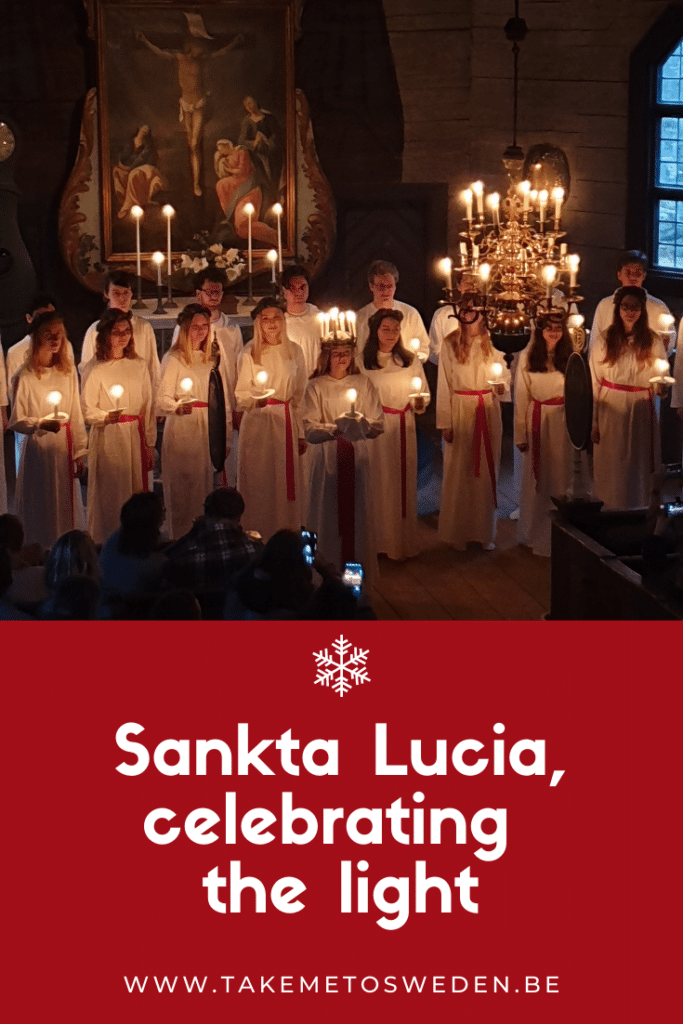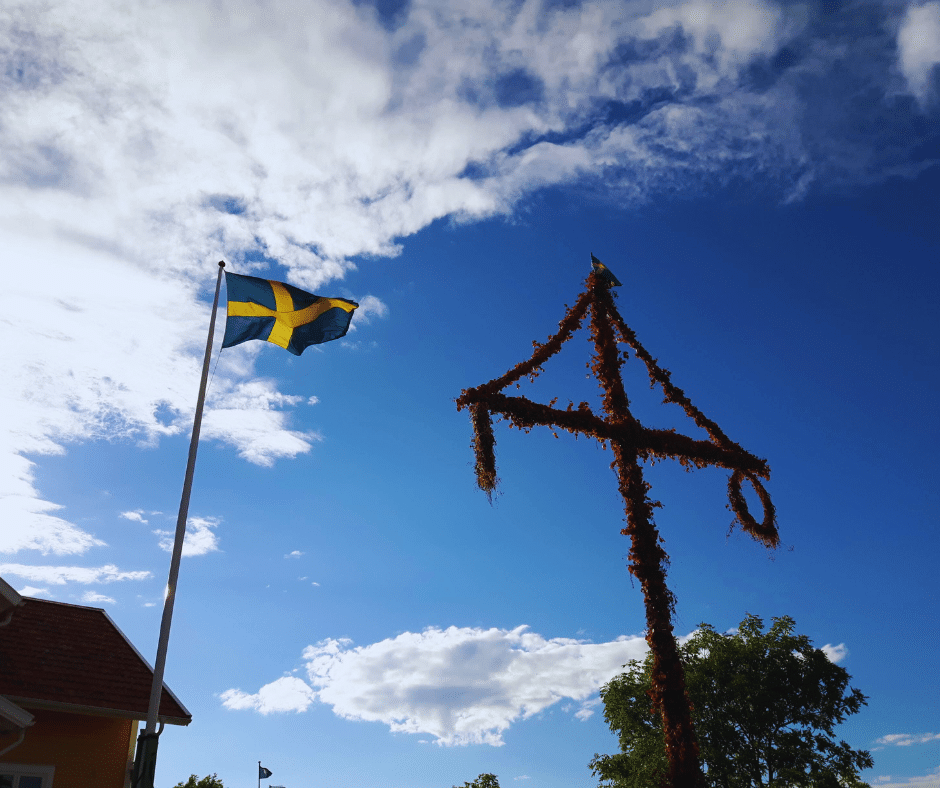On December the 13th, Sweden celebrates Sankta Lucia, the celebration of light. The Lucia celebration literally brings some light into the dark winter months. Girls wear long white robes and wear candles in their hair. Everyone eats lussekatter or saffron rolls and gingerbread. In just about every church there is a celebration in which Lucia songs are sung.
The tradition
Following the tradition the children wake their parents on the 13th of December. They enter their parents’ room, sing Lucia songs and bring them lussekatter (saffron rolls) on bed. Also in the church there is a special celebration in which the Lucia choir sings the typical songs.
The girls (although today, in progressive Sweden, it can also be boys) wear long white clothes with a red ribbon and one girl, Lucia, wears a crown of candles. The boys are star boys and wear a star-studded item.
Every city chooses its own Lucia. A carriage usually brings Lucia to “lighten” the town. There is also a national election on television. A lot of Miss Sweden’s has started as Lucia. The Lucia election is an exception in a Sweden where they strive to treat everyone equal and not to rank. In 1927 Stockholm chose her Lucia for the first time.
Origin
There is some discussion about where the Lucia festivities come from. It would be called after Sankta Lucia of Syracuse, a martyr who died in 304 AD. She could still see, even though she had no eyes. The red ribbons that the girls now wear would be symbols for the blood.
Sankta Lucia took elements of the pre-Christian midwinter light festival. In the past, December 13 corresponded to midwinter, the shortest day of the year. Due to the calendar changes, this day changed, but Lucia’s name day remained.
Would you like to attend Sankta Lucia yourself? In Stockholm I recommend going to Skansen (with a concert in Seglora kyrka or on the Solliden stage). I also attended the Lucia concert in Bosebo Church in Lund. What a wonderful experience!
Pin for later
Save this article to Pinterest for easy reference later!






